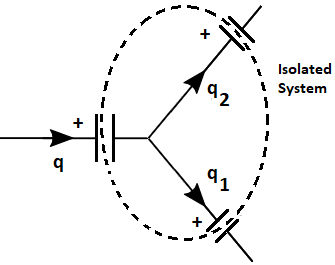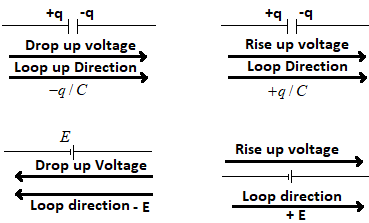Kirchhoff’s Rules for Capacitors
Kirchhoff’s rules can be used to determine the potential difference and charge on the plates of a capacitor in any electric circuit. In a circuit with capacitors and batteries, two important rules are involved.
Junction Rule: A capacitor circuit obeys the principle of conservation of charge. The incoming charge at any junction is equal to the outgoing charge from the junction, i.e.., q = q₁ + q₂. In other words, in any isolated system, the net charge is conserved. So, in the system shown in below figure:
-q + q₁ + q₂ = 0 ⇒ q = q₁ + q₂

Loop Rule: In a closed circuit, the algebraic sum of the rise up and drop up voltages is zero. i.e.., ΣV = 0. The direction of the loop is not specified and is chosen in a comfortable manner. When we go from a point of higher potential to a point of lower potential in the loop direction, drop up voltages occurs. In sign convention, rise up of voltage is taken as positive.

